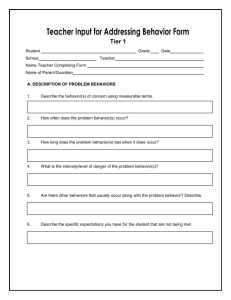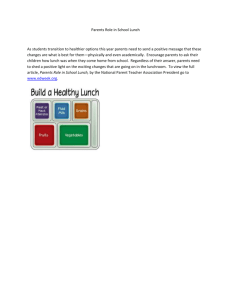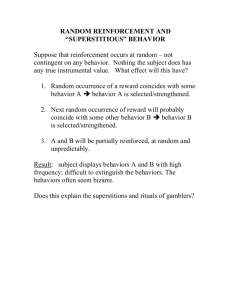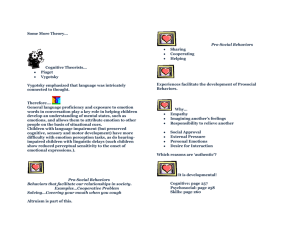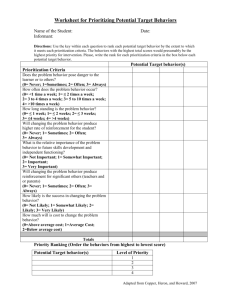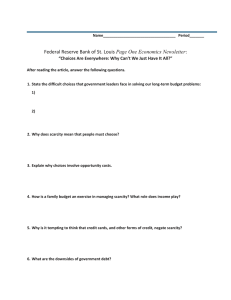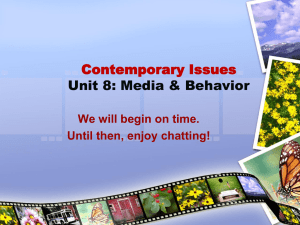ch 14 study guide - Gilbert Public Schools
advertisement
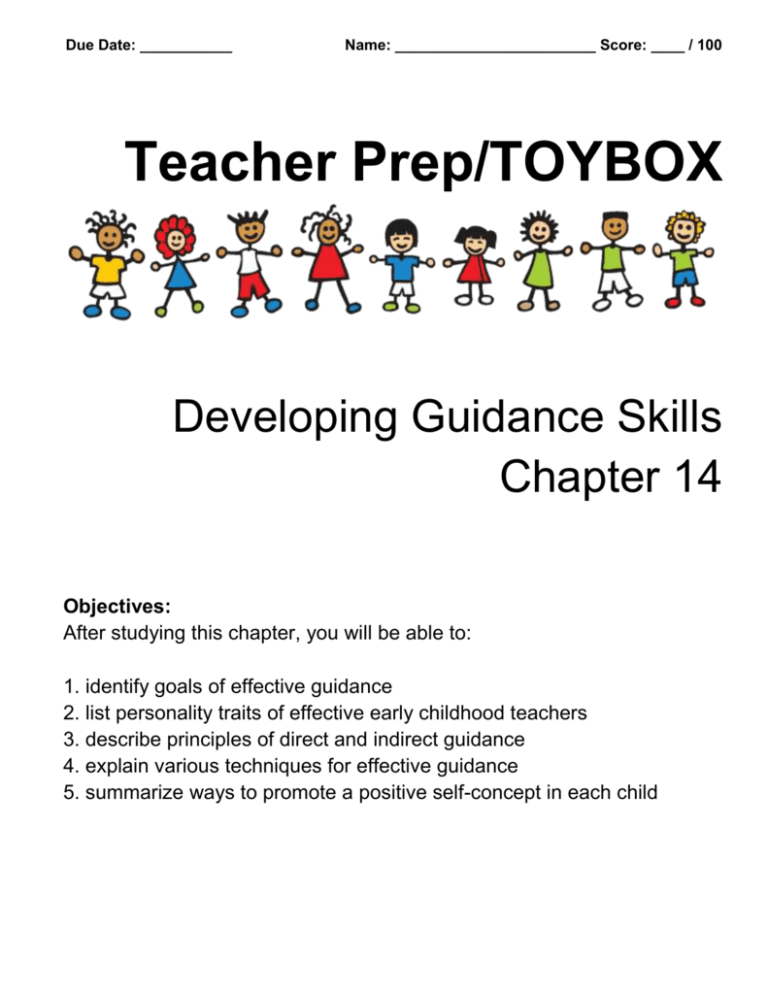
Due Date: ___________ Name: ________________________ Score: ____ / 100 Teacher Prep/TOYBOX Developing Guidance Skills Chapter 14 Objectives: After studying this chapter, you will be able to: 1. identify goals of effective guidance 2. list personality traits of effective early childhood teachers 3. describe principles of direct and indirect guidance 4. explain various techniques for effective guidance 5. summarize ways to promote a positive self-concept in each child Vocabulary: guidance: _____________________________________________________________________ _____________________________________________________________________________ _____________________________________________________________________________ prosocial behaviors: ____________________________________________________________ _____________________________________________________________________________ _____________________________________________________________________________ nonverbal behaviors: ____________________________________________________________ _____________________________________________________________________________ _____________________________________________________________________________ indirect guidance: _______________________________________________________________ _____________________________________________________________________________ _____________________________________________________________________________ direct guidance: ________________________________________________________________ _____________________________________________________________________________ _____________________________________________________________________________ verbal environment: _____________________________________________________________ _____________________________________________________________________________ _____________________________________________________________________________ positive reinforcement: __________________________________________________________ _____________________________________________________________________________ _____________________________________________________________________________ consequence: _________________________________________________________________ _____________________________________________________________________________ _____________________________________________________________________________ natural consequence: ____________________________________________________________ _____________________________________________________________________________ _____________________________________________________________________________ Logical consequence: ___________________________________________________________ _____________________________________________________________________________ _____________________________________________________________________________ Time-out: _____________________________________________________________________ _____________________________________________________________________________ _____________________________________________________________________________ I-Message: ____________________________________________________________________ _____________________________________________________________________________ _____________________________________________________________________________ prompting: ____________________________________________________________________ _____________________________________________________________________________ _____________________________________________________________________________ redirecting: ____________________________________________________________________ _____________________________________________________________________________ _____________________________________________________________________________ modeling: _____________________________________________________________________ _____________________________________________________________________________ _____________________________________________________________________________ active listening: ________________________________________________________________ _____________________________________________________________________________ _____________________________________________________________________________ Review and Reflect: 1. What are prosocial behaviors? Give specific examples. 2. Studies show that ______________ teachers have more hyerpactive, disruptive and bored students. 3. Why do children of permissive teachers often exhibit aggressive and attention seeking behavior? 4. Describe one of the general guidelines you should follow for effective guidance to occur. 5. Give three examples of actions useful in direct guidance. 6. Use positive guidance statements to rewrite the following: A. Do not scream! B. Do not get paint on your dress. C. Do not spill the milk. D. Quit running! 7. Name the direct guidance principle being used in each of the following examples: A. ______________________________ Penny was disciplined yesterday for running through the cooking area. When she ran through the cooing area today, she was again disciplined. B. ______________________________ The children are playing in the art area. It will be lunch time in 10 minutes. Their teacher says to them, “Children, it is almost time for lunch. Please start cleaning up the area.” C. ______________________________ Henry is running from one end of the teeter-totter to the other. His teacher comes over to him and said, “Henry, stop that. You might hurt yourself.” D. ______________________________ A teacher says to her children, “On Friday, we will be eating lunch outdoors. You can choose to have either a hot dog or a hamburger for lunch.” 8. Give an example of how the physical setup of the classroom can be used to encourage independence in the children 9. Why would a teacher want to use positive reinforcement? 10. Explain the difference between natural consequences and logical consequences? 11. True or False. (Circle one.) Praise should be given at the end of the day for any positive behaviors observed during the day. 12. How does a prompt differ from a suggestion? 13. The key to ______________________________ is supplying an appealing substitute. 14. Explain the process of active listening. 15. True or False (Circle one.) Ignoring is an appropriate guidance technique when the child’s behavior is verbally harmful to other children. 16. List three ways that you can encourage the development of children’s positive self esteem. 17. What is the difference between direct and indirect guidance? 18. List and explain five direct guidance principles. 19. Describe three guidance techniques and give examples of each one.
